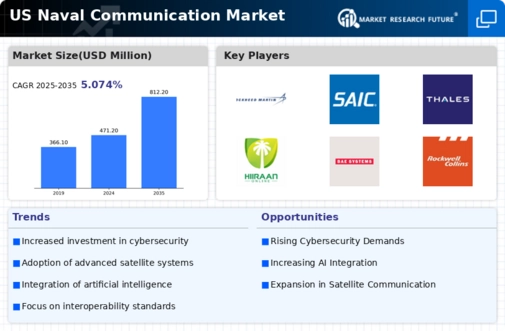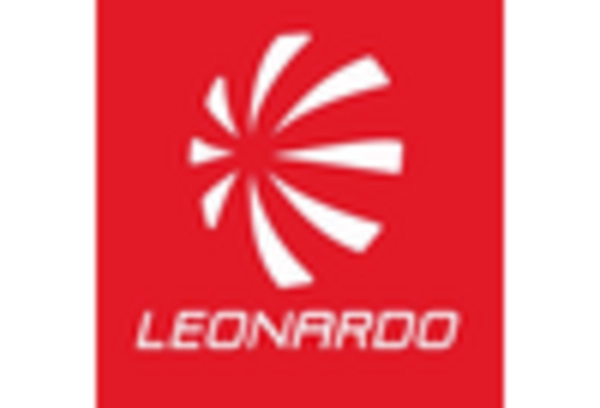Increased Defense Budgets
The naval communication market in the US is experiencing growth due to increased defense budgets. The US government has allocated substantial funds to enhance naval capabilities, with a projected budget of $750 billion for defense in 2025. This financial commitment is likely to drive investments in advanced communication systems, ensuring that naval forces maintain operational superiority. Enhanced funding allows for the procurement of state-of-the-art communication technologies, which are essential for effective command and control in maritime operations. As a result, the naval communication market is expected to expand, with a compound annual growth rate (CAGR) of approximately 5% over the next five years. This trend indicates a robust demand for innovative communication solutions that can support the evolving needs of the naval forces.
Emerging Geopolitical Tensions
Emerging geopolitical tensions are significantly influencing the naval communication market in the US. As global power dynamics shift, the need for secure and reliable communication systems becomes paramount. The US Navy is increasingly focused on enhancing its communication capabilities to address potential threats from rival nations. This heightened focus on naval readiness is likely to result in increased investments in communication technologies, which are critical for maintaining situational awareness and operational effectiveness. The naval communication market is projected to grow as the US seeks to bolster its maritime security posture. Analysts suggest that the market could witness a growth rate of around 6% annually as the demand for advanced communication solutions rises in response to these geopolitical challenges.
Growing Demand for Secure Communications
The growing demand for secure communications is a critical driver of the naval communication market in the US. As cyber threats become more sophisticated, the need for robust and secure communication systems is paramount. The US Navy is prioritizing the development of encrypted communication channels to protect sensitive information during operations. This focus on cybersecurity is likely to lead to increased investments in advanced communication technologies, which can withstand potential cyberattacks. The naval communication market is projected to grow at a rate of 5.5% annually as the demand for secure communication solutions escalates. This trend underscores the importance of safeguarding naval operations against emerging cyber threats.
Focus on Enhanced Training and Simulation
the focus on enhanced training and simulation influences the naval communication market in the US. As naval forces seek to improve operational readiness, there is a growing emphasis on training personnel in the use of advanced communication systems. The US Navy is investing in simulation technologies that replicate real-world scenarios, allowing personnel to practice communication protocols in a controlled environment. This investment is expected to drive demand for advanced communication solutions that support training initiatives. The naval communication market is likely to experience a growth rate of approximately 4.5% as the need for effective training tools becomes increasingly recognized. This trend highlights the importance of preparing naval forces to operate sophisticated communication systems in dynamic maritime environments.
Technological Advancements in Communication
Technological advancements are reshaping the naval communication market in the US. Innovations such as satellite communication, secure data links, and artificial intelligence are revolutionizing how naval forces communicate. The integration of these technologies enhances the efficiency and reliability of communication systems, which are vital for mission success. The US Navy is investing heavily in research and development to leverage these advancements, with an estimated $2 billion allocated for communication technology upgrades in 2025. This investment is expected to drive the naval communication market, as modernized systems become essential for effective naval operations. The market is likely to see a CAGR of 7% as these technologies become increasingly integrated into naval operations.

















Leave a Comment